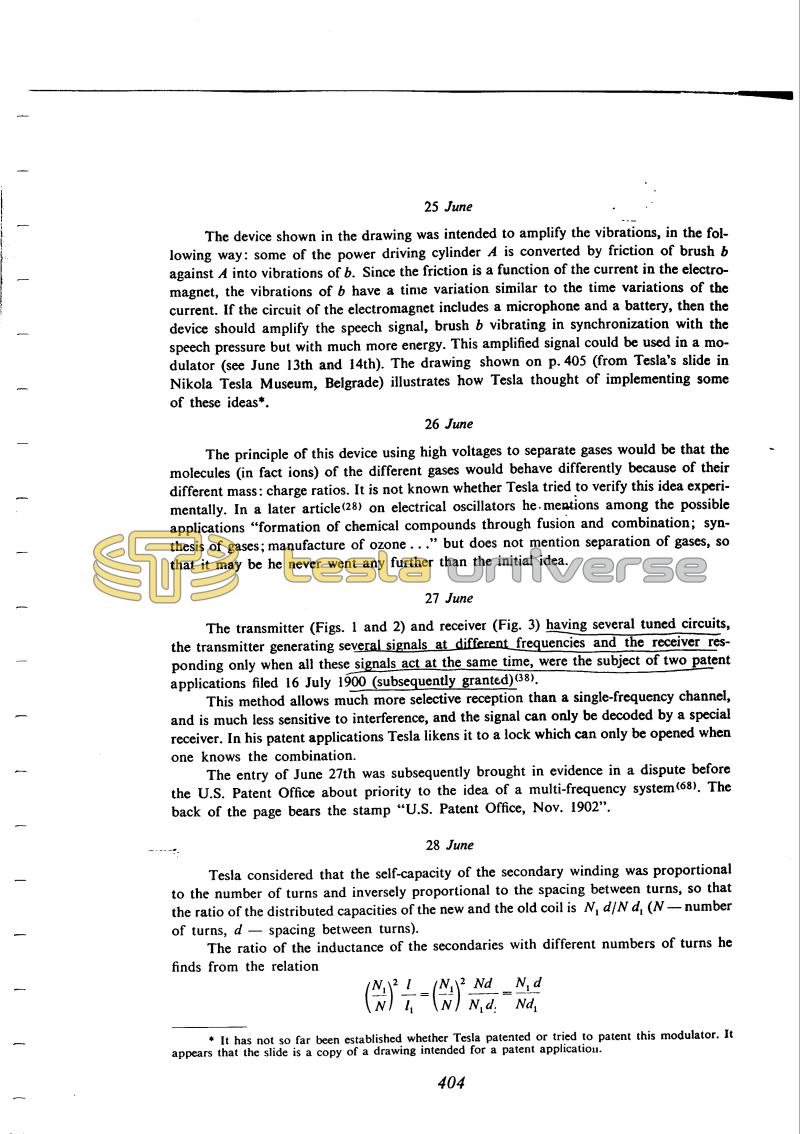
Nikola Tesla Books
Books written by or about Nikola Tesla
* It has not so far been established whether Tesla patented or tried to patent this modulator. It appears that the slide is a copy of a drawing intended for a patent application.
404
28
Tesla: "Electrical oscillators", El. experimenter, July, 1919, A-78.
38
Tesla: "System of signaling", U.S. Patent 725 605, Apr. 14, 1903, Appl. July 16, 1900, P-337.
"Method of signaling", U.S. Patent 723 188, Mar. 17, 1903, Appl. June 14, 1901, P-352.
68
Testimony in behalf of Tesla, Interference No. 21,701, United States Patent Office, New York, 1902.

